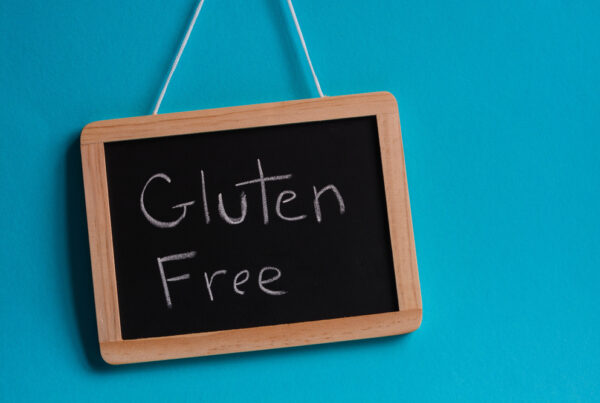Is My Diet Healthy? | Try This 7-Point Checklist
“Is my diet healthy?” That’s an important question for people concerned with their health and well-being. The problem is, answering that question can be a challenge. This is because the definition of what makes up a “healthy diet” is always changing. Conflicting information and dietary trends can make it difficult to determine if one’s diet is truly healthy.
Is cholesterol bad? What about fat? Are fats good and carbs bad? No wonder nutrition can be confusing!
Is your diet healthy? We’ve come up with a comprehensive 7-point checklist to help you get a balanced diet and avoid some common nutrition mistakes. After all, understanding whether your diet is genuinely healthy is essential for your long-term health and vitality. At Sarah Treat Nutrition, we want you to feel your best and live an incredible life!
1. Balanced Macronutrients
A well-rounded diet includes a balance of macronutrients – carbohydrates, proteins, and fats. Here’s how to assess your macronutrient intake:
- Carbohydrates: Include complex carbohydrates like whole grains, fruits, and vegetables in your diet. These foods provide sustained energy and fiber for digestive health. Limit your intake of simple carbohydrates such as sugary snacks and refined grains, as they can lead to energy spikes and crashes.
- Proteins: Adequate protein intake is crucial for muscle repair, immune function, and overall health. Include lean sources of protein like poultry, fish, beans, tofu, and dairy in your diet. Make sure you’re getting enough, but not excessive, protein.
- Fats: Healthy fats, such as those found in avocados, nuts, and olive oil, support brain function and protect your heart. Reduce saturated and trans fats found in fried and processed foods. A balanced diet should provide fats in moderation.
2. Varied Food Choices
Diversity is one of the keys to a healthy diet. Consuming a variety of foods ensures that you receive a wide range of nutrients. Check if you’re incorporating different food groups into your meals:
- Fruits and Vegetables: Aim to fill half your plate with colorful fruits and vegetables. These nutrient-dense foods offer vitamins, minerals, and antioxidants that support overall health.
- Protein Sources: Rotate between different protein sources, such as lean meats, fish, legumes, and plant-based options. Each protein source brings its unique set of nutrients to the table.
- Grains: Choose whole grains like brown rice, quinoa, sweet potatoes, and oats. They provide more fiber and nutrients.
3. Portion Control
Even healthy foods can contribute to weight gain if consumed excessively. The answer to “Is my diet healthy?” is “no” if you eat well above what your body can use. Pay attention to portion sizes to avoid overeating. Use these general guidelines:
- Visual Cues: Use your hand as a guide. A serving of protein should be about the size of your palm, while a cupped hand represents a portion of carbohydrates. Your thumb’s tip can help gauge healthy fats.
- Mindful Eating: Practice mindful eating by savoring each bite, eating slowly, and stopping when you feel satisfied, not overly full.
4. Hydration
Water is essential for overall health. Dehydration can lead to various health issues. To ensure you’re staying hydrated:
- Water Intake: Aim to drink at least eight glasses (64 ounces) of water daily. Adjust this based on your activity level, climate, and individual needs.
- Monitor Urine Color: Your urine should be pale yellow. Dark yellow or amber-colored urine may indicate dehydration.
5. Minimize Processed Foods
Processed foods often contain added sugars, unhealthy fats, and excess sodium. Reducing their consumption is a significant step towards a healthier diet:
- Read Labels: Check food labels for added sugars, trans fats, and excessive sodium. Opt for products with minimal processing and recognizable ingredients.
- Cook at Home: Preparing meals at home allows you to control the ingredients and cooking methods, reducing your reliance on processed foods.
6. Fiber Intake
Fiber is a crucial component of a healthy diet, as it aids digestion, promotes regular bowel movements, and helps maintain stable blood sugar levels. To ensure you’re getting enough fiber:
- Include High-Fiber Foods: Incorporate foods like whole llegumes, fruits, and vegetables into your meals. These foods are rich in dietary fiber and contribute to your overall fiber intake.
- Gradual Increase: If you’re not accustomed to a high-fiber diet, gradually increase your fiber intake to avoid digestive discomfort. Aim for a daily target of at least 25-30 grams of fiber.
7. Sugar and Added Sugars
Excessive sugar consumption can lead to various health problems, including weight gain, dental issues, and an increased risk of chronic diseases like type 2 diabetes. To monitor your sugar intake:
- Read Labels Carefully: Check food labels for added sugars, which can hide under various names like sucrose, high-fructose corn syrup, and agave nectar. Limit foods and beverages high in added sugars.
- Choose Natural Sweeteners: Opt for natural sweeteners like honey, maple syrup, or stevia as alternatives to refined sugar when needed. However, use them in moderation.
Are You Dieting? Compare it to This Checklist
Unless your nutrition plan has been put together by a certified nutritionist or health professional, be careful about dieting on your own. Many people consider trying a new diet at some point. The problem is, some “diets,” can starve your body of the nutrients and fuel it needs. You don’t want to cut out any major food groups or fall into more than a 500-calorie deficit per day.
Always consult a nutritionist before making major changes to your eating habits.
Nutrition and Health: A Personalized Journey
While the above checklist offers a solid foundation for answering, “Is my diet healthy?” It’s crucial to remember that nutrition and health don’t look the same for everyone. Calorie, vitamin, and protein needs can vary widely based on factors such as age, gender, activity level, genetics, and underlying health conditions.
For example…
- Calorie Needs
A sedentary individual may require fewer calories than an athlete. In general, women need fewer calories than men. Consult with a registered dietitian or healthcare professional to determine your specific calorie needs based on your goals and lifestyle.
- Vitamin and Mineral Requirements
Certain health conditions or dietary preferences, like veganism, may necessitate supplementation to meet specific nutrient requirements. Regular blood tests can identify deficiencies and guide your dietary choices.
- Protein Intake
Athletes and those focused on muscle building may need more protein than the average person. Tailor your protein intake to your individual needs and goals.
- Food Sensitivities and Allergies
Some individuals may have food sensitivities or allergies that require dietary modifications. Identifying and eliminating trigger foods is essential for their health.
Is Your Diet Healthy? Find Out at Sarah Treat Nutrition
Being able to evaluate the healthiness of your diet is an essential step towards maintaining overall well-being. We hope that our seven point checklist can serve as a valuable tool to help you answer the question, “Is my diet healthy?”
Proper nutrition is key to health and wellness in life. Sarah Treat, MS, CCN, is a holistic nutritionist in San Antonio dedicated to helping clients live their best lives. She’s available to provide further guidance on tailoring your diet to optimize your health and vitality.





